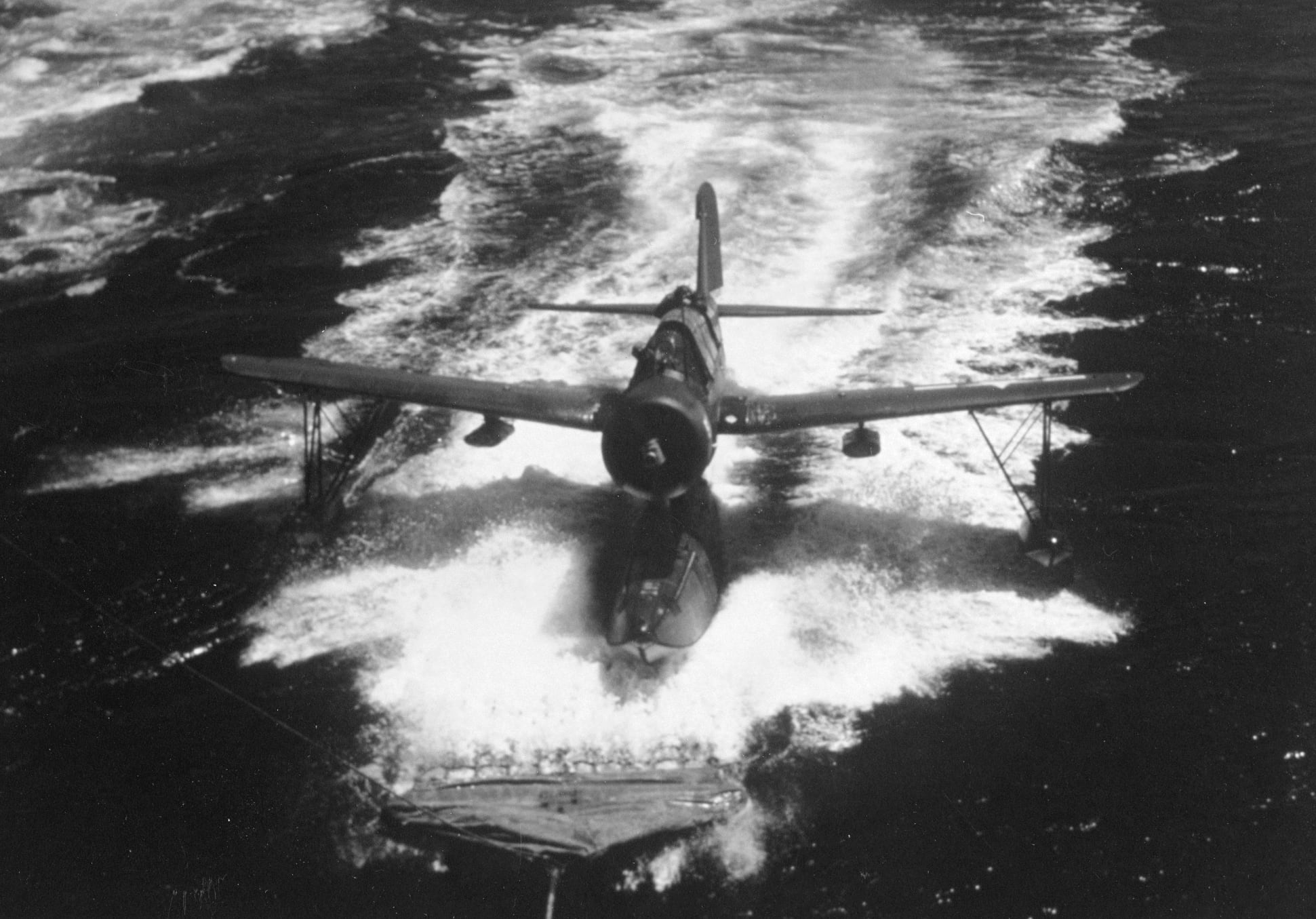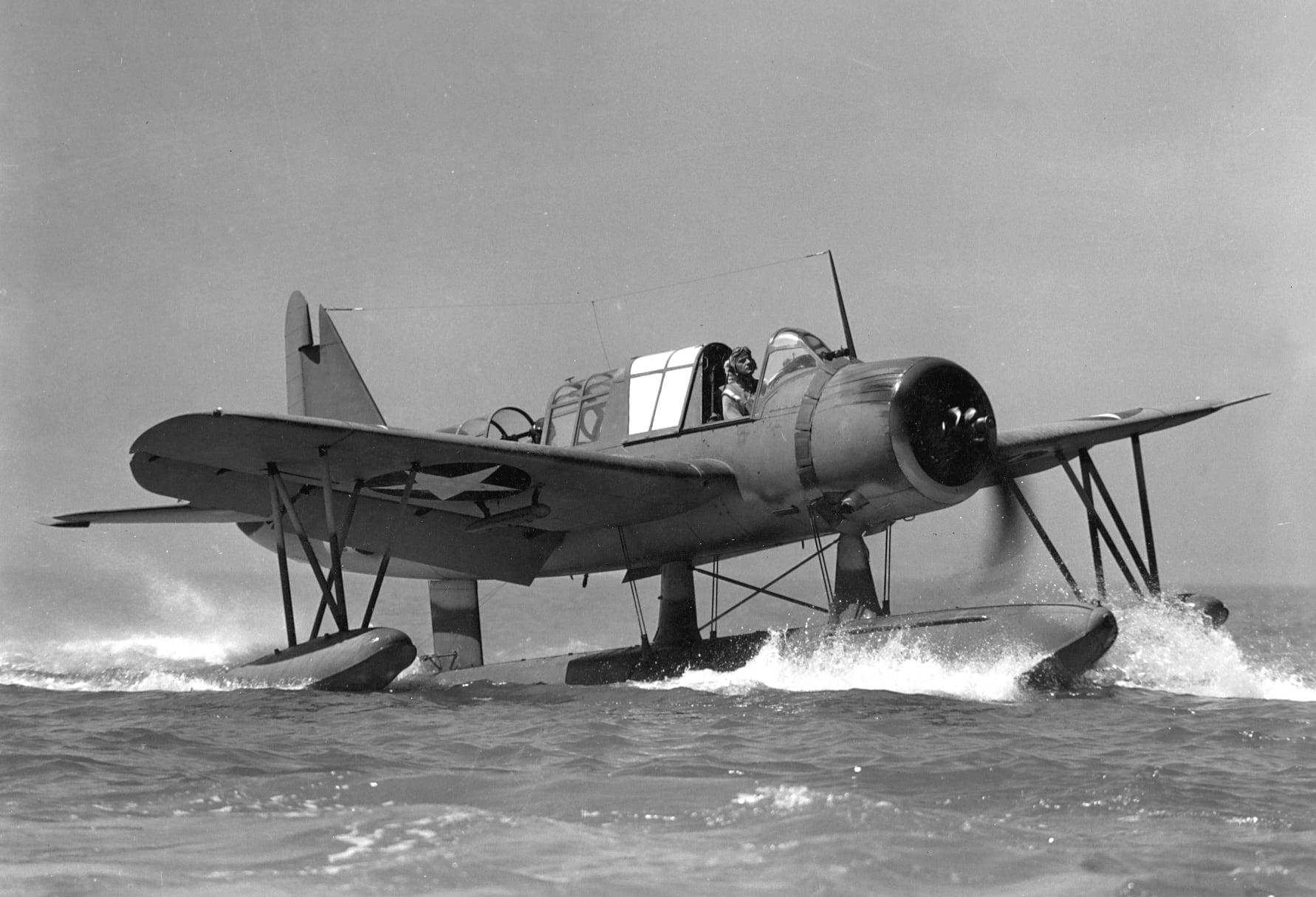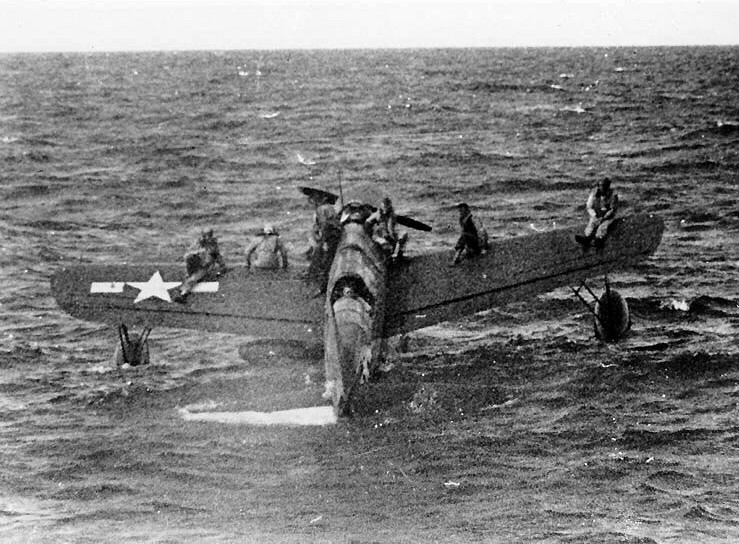World War I Ace Eddie Rickenbacker Was Just One of the Many Saved by the Mighty OS2U.
Vought’s OS2U Kingfisher first took flight on March 1st 1938. This observation floatplane, conceived as a replacement for the Curtiss SOC Seagull biplane floatplane, operated from American Navy battleships, cruisers, and even a few destroyers via catapult and from shore bases around the world during World War II. In so doing the slow but steady Kingfisher earned the sobriquet “Eyes of the Fleet.” While the every single one of the 1,519 OS2Us Vought and the Naval Aircraft Factory built was so slow it had trouble getting out of its own way, some elements of its design and the methods used to build them were radically advanced and would be seen on tens of thousands of subsequent aircraft.

Slower Than Molasses in January
The Kingfisher was designed by Vought engineers, and together with the Naval Aircraft Factory methods were devised to build the floatplane using spot welding- a first for production aircraft. This resulted in a stronger and more rigid structure with lower drag. The Vought engineers also added high-lift devices such as spoilers, deflector plate flaps, and variable geometry ailerons which together increased the camber of the wings. The added lift produced was appreciated because Kingfishers were underpowered by a Pratt & Whitney R-985-4 Wasp Junior radial engine which produced only 450 horsepower. All those horses pulled the advanced (for its day) airframe around at somewhere between 70 and a brisk 100 miles per hour with a “top” speed of 164 miles per hour.

Operating Floatplanes From Capital Ships
The OS2U’s wings were mid-mounted with a single large float under the fuselage and smaller stabilizing floats mounted outboard on each wing. When launched by catapult Kingfishers on floats were brought back aboard after landing on a relatively flat surface produced when the recovering ship made a wide sweeping turn. The OS2U would then taxi onto a “sea sled” towed just below the surface. A small hook on the bottom of the float would engage the sled. This procedure allowed the OS2U to be craned aboard the ship from close aboard. The Kingfisher was armed with a pilot-fired .30 caliber machine gun mounted and firing forward in the nose as well as a defensive ring mount for either a single or dual .30 caliber setup aft for the gunner/radio operator/observer. Capable also of carrying a pair of 100 pound bombs or two 325 pound depth charges, the warload of the Kingfisher was modest. However, this seemingly innocuous floatplane could call in all sorts of ordnance when its crew observed targets or spotted for naval gunfire.

Service Entry and the International Floatplane
Kingfishers began flying with the United States Navy (USN) in 1940. Several were sitting on Battleship Row catapults on December 7th 1941. Many of the initial batches of OS2Us were utilized either for flight training (both wheeled and float-equipped) or for inshore antisubmarine patrols along the Florida coastline. Kingfishers built by the Naval Aircraft Factory equipped several of these squadrons. Beaching gear allowed float-equipped OS2Us to operate from ramps. Early in the war Kingfishers were employed only by the US Navy, Marine Corps and Coast Guard, but Australia, Chile, the Dominican Republic, Mexico, the Soviet Union, The United Kingdom’s Fleet Air Arm, and Uruguay also flew OS2Us. After the war ended the Netherlands operated Kingfishers as well.

Rescuing Rickenbacker
When used as the scout planes they designed to be, Kingfishers flew long boring flights that were spiced with moments of sheer terror as they spotted for naval gunfire or flew rescue missions. Meat on the table for just about any marauding Japanese aircraft (including their float-equipped Nakajima-built A6M2-N Rufes– or Zeroes with floats), options available to Kingfisher crews were thin if forced to fight it out. But the exploits of the OS2U included two very high-profile rescues. The first was the rescue of World War I ace Eddie Rickenbacker in November of 1942. Rickenbacker was aboard a Boeing B-17D Flying Fortress that ditched in the Pacific within sight of nowhere but a Kingfisher on patrol found him and facilitated his rescue.

Improvise Adapt and Overcome
The other high-profile rescue involved one Kingfisher, on heroic Kingfisher crew flying from the battleship USS North Carolina (BB-55), the Balao-class submarine USS Tang (SS-306), and the Navy’s Operation Hailstone– the raids on the Japanese stronghold of Truk in April of 1944. Several Navy pilots had been shot down during their attacks on Truk but were in positions the lifeguard submarines, like the Tang, could not reach- Truk Lagoon. OS2U pilot Lieutenant John Burns and his crew landed in the lagoon and picked up one after another downed pilot- including another Kingfisher crew whose floatplane had capsized while attempting similar rescues. Of course Burns’ OS2U couldn’t take off with more than a single additional passenger. By the time the Kingfisher had ten soggy pilots and crew members inside and draped all over its wings it was barely afloat. But Burns taxied his nearly-swamped OS2U all the way to the Tang and rescue for all of them. Burns was decorated with the Navy Cross for his exploits that April day.

Serving Right Up Until the End
By the time the war advanced into late 1944 Curtiss’s own replacement for the SOC Seagull, the SC Seahawk, began to replace the Kingfishers in service. Other less-successful designs, notably the Curtiss SO3C Seamew, failed to adequately replace either the SOC or the OS2U. Kingfishers continued in service through the end of the war and were instrumental in the efforts to wrest the Japanese bastions so deeply entrenched in places like Saipan, Peleliu, and Iwo Jima. Several foreign nations operated their OS2Us well into the 1950s, Cuba was the last nation to retire operational Kingfishers in 1959. While no flyable Kingfishers exist today, several fine examples of these utilitarian aircraft can be viewed in museums.


[…] Read the rest of this amazing blog over at Avgeekery.com. […]
The Ghost That Died At Sunda Strait by W. G. Winslow. An excellent true story about a Kingfisher pilot stationed aboard the cruiser USS Houston (CA-30) at the outbreak of WWII and his flying that great plane.
Thank you for sharing. My dad was a Naval aviator in ww2 and flew the kingfisher off the USS Marblehead. I would love to hear the Smithsonian pulling their example off the floor and get it up and running….so I can fly it 🙂